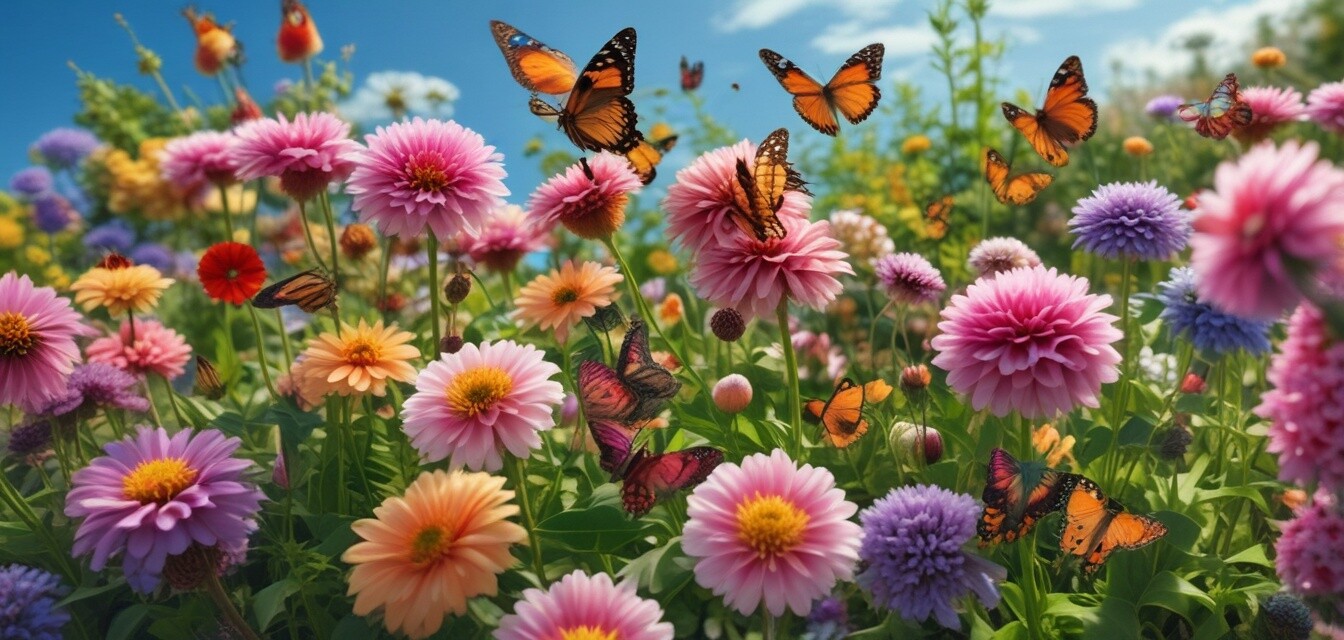
Creating a Butterfly Garden: Tips and Tricks
Key Takeaways
- Select native plants to attract local butterfly species.
- Incorporate diverse flower colors and shapes to provide nectar.
- Ensure a sunny location with sheltered spots for relaxation.
- Provide food sources like caterpillar host plants.
- Maintain a pesticide-free environment for healthy butterfly visits.
Creating a butterfly garden not only beautifies your outdoor space but also supports local ecosystems by attracting these wonderful pollinators. With careful planning and consideration of the plants you choose, you can design a garden that invites butterflies while providing a serene retreat for you. Below are some essential tips and tricks to help you get started!
Understanding Butterfly Needs
Butterflies have specific preferences when it comes to their habitats. To attract them effectively, it's important to understand what they require. Here are the two main elements:
- Nectar Sources: Butterflies feed on nectar from various flowering plants.
- Host Plants: These plants are necessary for butterflies to lay their eggs and for caterpillars to feed on.
Choosing the Right Plants
When selecting plants for your butterfly garden, opt for a mix of native and nectar-producing flowers. Below is a table of popular plants that may attract butterflies:
| Plant Name | Butterfly Type | Bloom Time |
|---|---|---|
| Milkweed | Monarchs | Summer |
| Purple Coneflower | Painted Ladies | Summer to Fall |
| Butterfly Bush | Various | Summer to Fall |
| Black-eyed Susan | Fritillaries | Summer |
| Lantana | Skippers | Summer to Fall |
Incorporating these plants into your garden design will improve your chances of attracting a variety of butterflies. For more information on eco-friendly fertilizers to enrich your soil, check out our Eco-Friendly Fertilizers page.
Designing the Layout
Your garden layout should be welcoming to butterflies while allowing easy access for your enjoyment. Here are some key layout tips:
- **Sunlight Exposure:** Butterflies are cold-blooded and require sunlight to warm their bodies. Aim for a sunny spot in your garden.
- **Sheltering Elements:** Incorporate shrubs or fences to provide shelter from wind and rain, creating a safe environment for butterflies.
- **Variety in Heights:** Use plants of different heights to create layers, offering perches for butterflies and visual appeal.
- **Water Source:** Consider adding a shallow water dish or birdbath with stones for butterflies to land on and drink.
Best Practices for Maintenance
Maintaining a butterfly garden requires ongoing attention. Here are some practices to keep in mind:
- Water your plants regularly to keep them healthy and hydrated.
- Deadhead flowers to promote blooming and attract more butterflies.
- Limit pesticide use, as these chemicals can harm butterflies and other beneficial insects.
- Consider allowing some "wild" areas for caterpillars and wildlife to thrive.
Tips for Beginners
- Start with a small area and gradually expand as you learn.
- Engage with local gardening groups to get advice and share experiences.
- Monitor butterfly activity and adjust your plant selection accordingly.
- Incorporate decorations like art or pathways to enhance the garden's charm.
Seasonal Considerations
Different seasons will affect your butterfly garden. Here’s how to prepare:
- Spring: Plant new flowers and remove debris from winter.
- Summer: Water regularly and check for pests.
- Fall: Cut back perennials and plan for next year’s plantings.
- Winter: Mulch to protect plants and plan your layout for the coming spring.
Conclusion
Creating a butterfly garden is a rewarding effort that yields beautiful results, benefiting both nature and your outdoor aesthetics. By incorporating the right plants, designing an inviting layout, and maintaining your garden, you'll set the stage for a lovely habitat that attracts butterflies all season long. If you're looking to expand onto other garden areas, feel free to explore our Garden Tools to ensure you have what you need for successful gardening endeavors.
Pros
- Enhances outdoor aesthetics.
- Supports local butterfly populations.
- Offers a tranquil environment for relaxation.
- Encourages biodiversity.
Cons
- May require ongoing maintenance.
- Vulnerability to pests.
- Seasonal fluctuations in butterfly presence.
For more garden inspiration and innovative ideas, visit our Garden Inspiration category and let your creativity bloom!